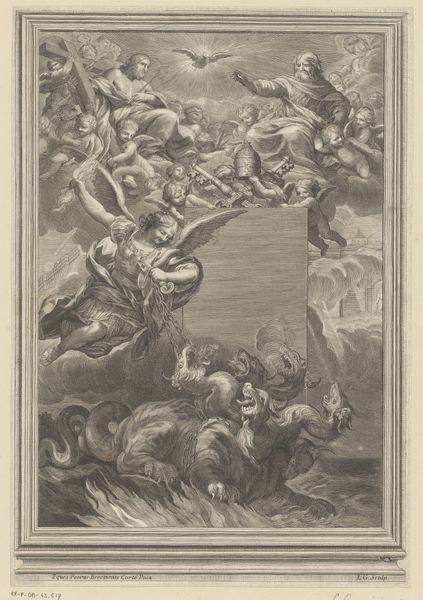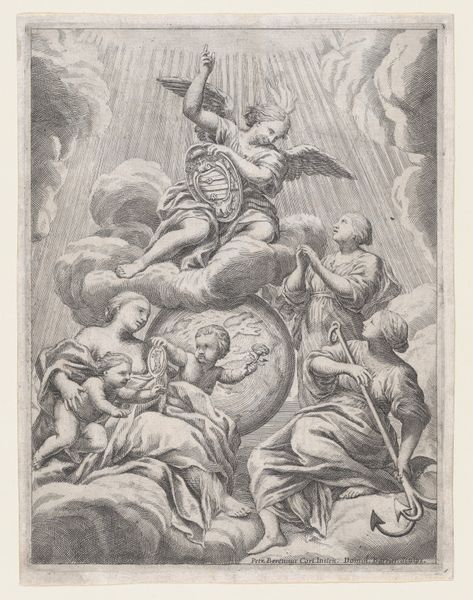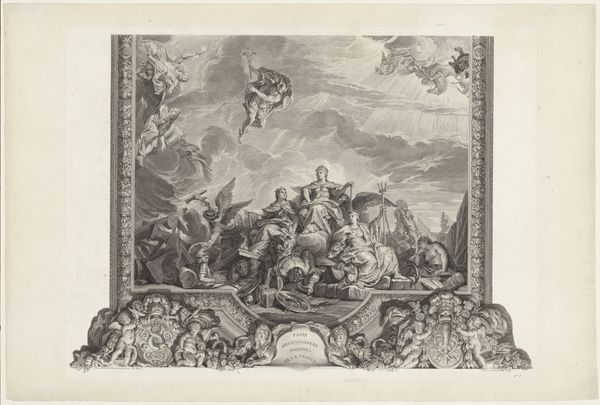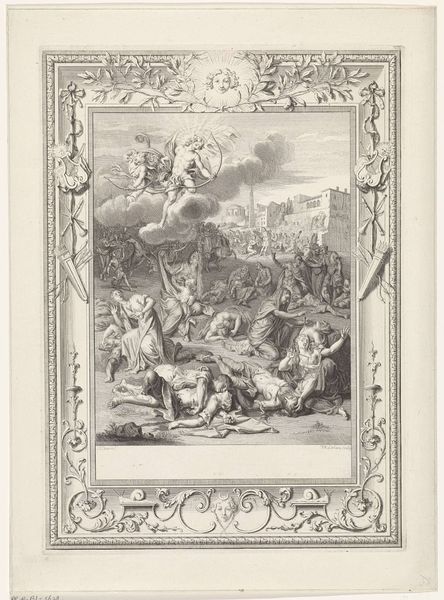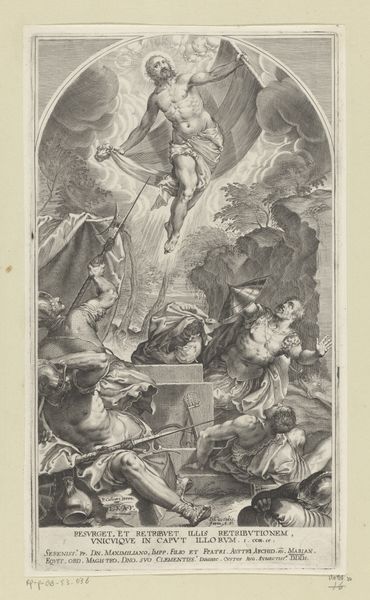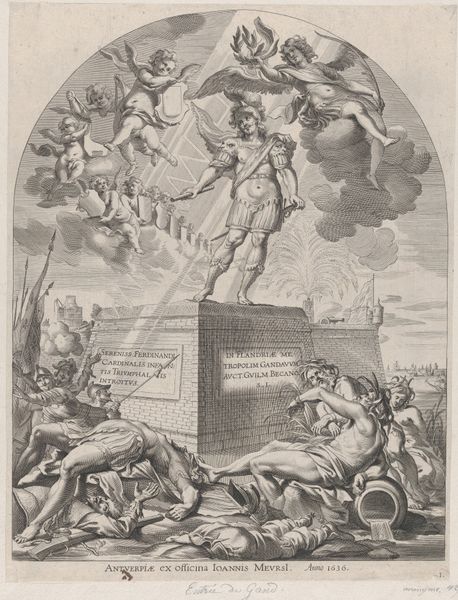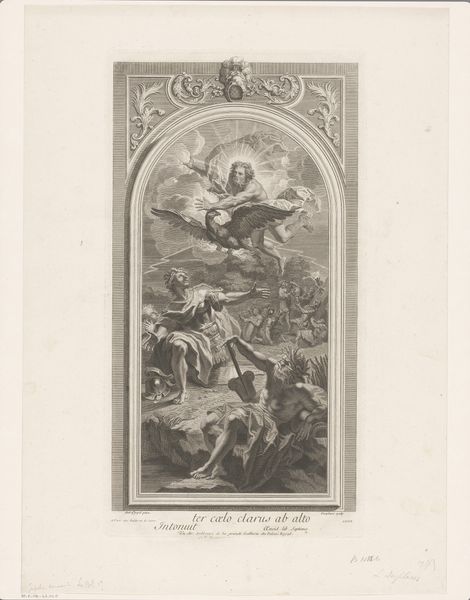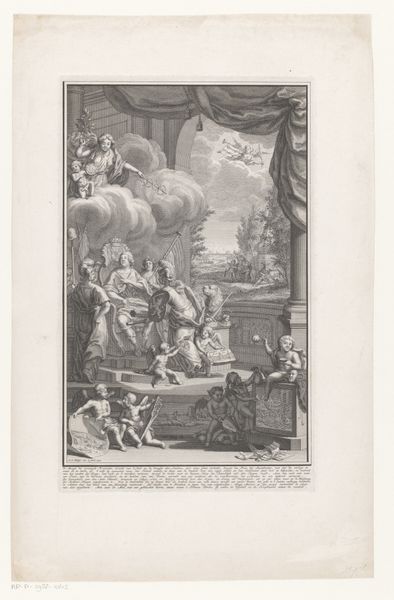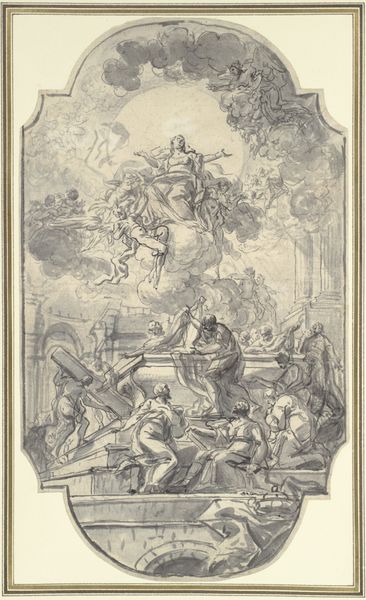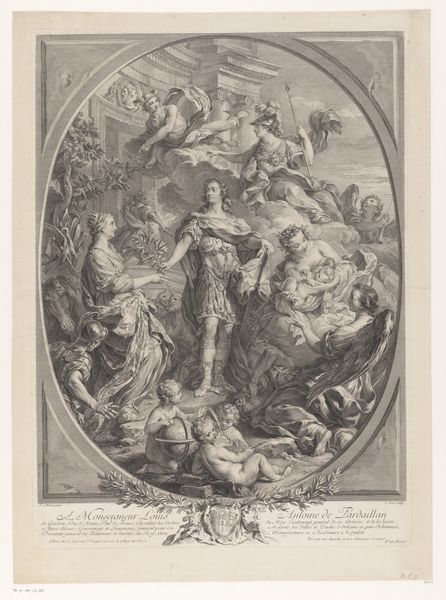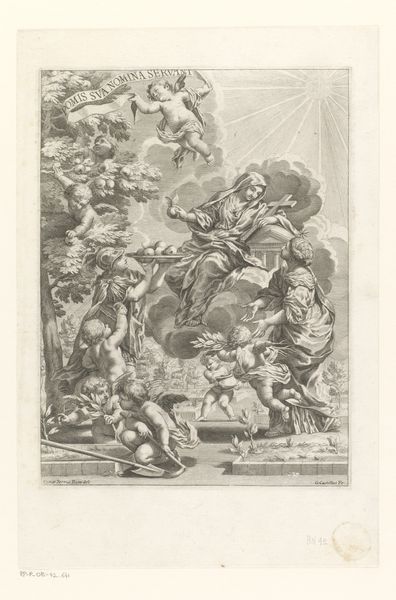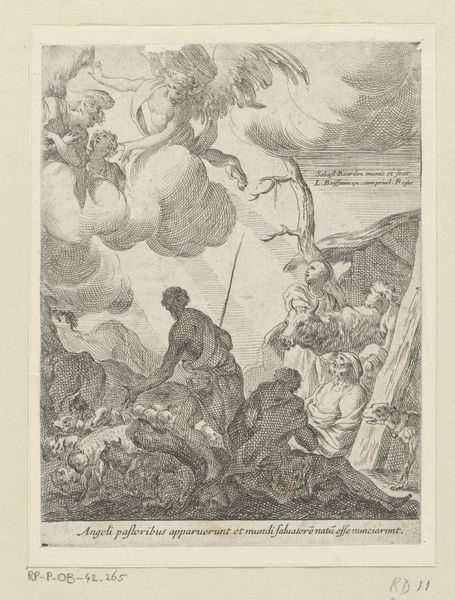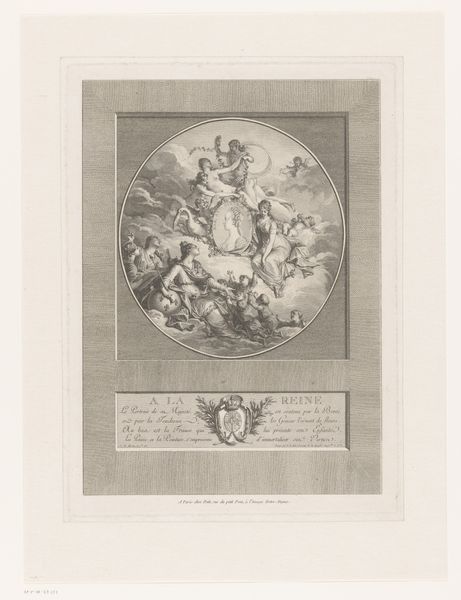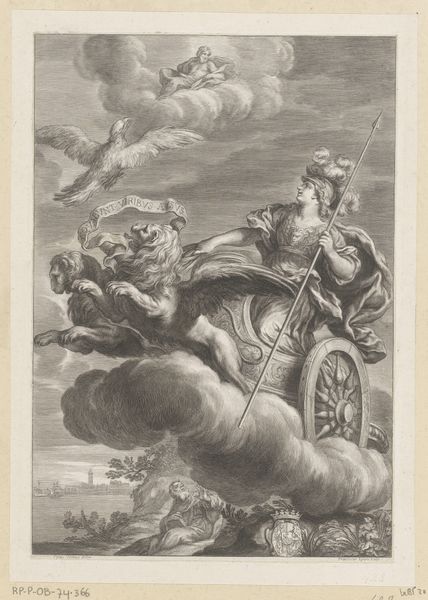
print, engraving
#
allegory
#
baroque
# print
#
old engraving style
#
landscape
#
figuration
#
history-painting
#
engraving
Dimensions: height 725 mm, width 463 mm
Copyright: Rijks Museum: Open Domain
Curator: This print, made by Jean Louis Roullet in 1678, is entitled "Hercules offers Jupiter his defeated enemies." The artwork can be found at the Rijksmuseum. Editor: It’s intense. The dark lines and the sheer number of figures crammed into this pictorial space evoke a feeling of baroque grandeur… almost oppressively so. Curator: Indeed, the artist employed engraving techniques characteristic of the Baroque period, which are especially effective here in illustrating an allegorical tableau vivant. What strikes me most is the meticulous detailing in rendering textures – from the figures’ musculature to the cloudy milieu. Editor: For me, Hercules, despite his prominence, feels almost secondary. The vulnerable defeated enemies—their bestial forms—lying vanquished before Jupiter carry an emotional weight. How does Roullet’s rendition challenge, or perhaps perpetuate, hierarchical social structures through this mythological lens? The violent subjugation is quite apparent here. Curator: The classical iconography of Hercules presenting his defeated enemies to Jupiter alludes to divinely sanctioned rule and power structures, reinforcing certain cultural values during that time. Semiotically, the landscape contributes as well; a harmonious domain is ensured only through conquest. Editor: I wonder though… the active versus passive dichotomy staged between Hercules and the defeated… doesn’t it hint at more subtle political commentary regarding heroism and governance, maybe offering viewers some space to critically consider whether that “harmony” comes at too high a price? Curator: Potentially. However, viewed through the lens of Baroque conventions and allegorical symbolism, the core intention was to promote notions of power and divine legitimacy. But the lasting appeal of any artwork, is that these interpretations may be revisited. Editor: Exactly, allowing new socio-political dialogues with history through artworks that may challenge contemporary assumptions around equity, heroism, and even divinity. Curator: Agreed. Thinking structurally, I'm now viewing this complex composition anew. Editor: A fitting reflection to complete our examination.
Comments
No comments
Be the first to comment and join the conversation on the ultimate creative platform.
